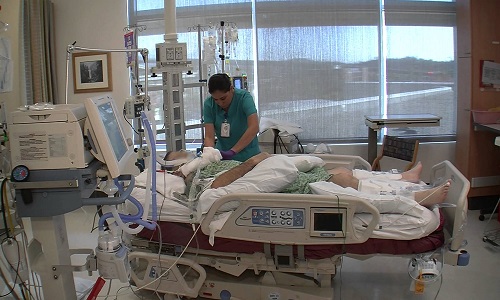3,187 total views, 1 views today
Have you ever experienced some
sought of illness few days after visiting a hospital or health facility? Many
people have had stories of how they were once healthy before going to visit a
relative or friend at the hospital and were later down with one illness or the
other. There is no need to wonder much. It is scientifically explained that
there are certain infections whose development is encouraged by conditions as
can be found in a hospital environment. These infections are generally
classified as ‘Hospital-Acquired Infections (HAI)’- and are also known as
Nocosomial infections. Sometimes nocosomal infections could grow severe and may
even lead to death in a number of instances.
Examples of Hospital Acquired infections
Depending on what microorganisms
are involved, Hospital Acquired Infections may range from mild to the severe
types. Usually, from statistical records, predominant infection causing
organisms would include strains of the dreaded Staphylococcus aureus (although it is a normal flora of the human
body found especially in the nose and nasal cavity where they are non virulent,
they can become very pathogenic when conditions that favour their virulence are
present), Pseudomonas aeruginosa, Candida albicans, Tuberculosal organism, with other intestinal habitating organisms.
Transmission of Hospiatal Acquired Infections
1. Contact with Contaminated Surfaces
Transmission of these diseases in
the hospital setting is made possible when high hygiene (read about personal
hygiene here) practices for a safe environment are not practiced, thus allowing
hospital surfaces such as trolleys, ward walls and floors, beds and even
equipments, harbour and breed organisms. So, when people come in contact with
these surfaces, the pathogenic organisms are transferred into their bodies and
consequently find means of getting into the internal body environment where
they cause the diseases. In some cases, patients with weak immune systems can
contact strains of pathogens that may have been present on surface such as bed
for a long time. This is because the organisms are able to survive for a long
time, while some of them may have even developed some resistance to drugs like
antibiotics.
2. Poor Dispersion of Droplets
Apart from contact, other means
of transmission includes droplet dispersion where droplets containing microbes
from an infected person are dispelled and suspended in air from where they
later settle down on a new host. Actions that favour this are coughing,
sneezing and even talking. These actions would further lead to diseases like
tuberculosis, Legionnaires ‘disease and Hospital-Acquired Pneumonia.
Prevention of Hospital Acquired Infections
1. Personal Safety Precautions In Hospitals
As a means of preventing the
occurrence of HAIs, an individual must be conscious of the type and condition
of environment. In a section where airborne disease cases are prevalent, he/she
must ensure that safety precautions associated with airborne diseases are
enforced; sometimes, a safe distance should be kept between individual and
patient. This procedure is also applicable to the area where contact is a prevalent
means of transmission. Unnecessary contact with patients, bedding materials and
hospital equipments must be avoided. If contact must be made, use of sterile
gloves should be emphasized.
2. Regular Assessment of Health Facilities
Aside individual precaution
methods, the adoption of quality assurance and/or quality control measures
should be envisaged in the healthcare sector. By this, there are regular
assessments on the health safety standard in hospitals. This would promote
better sanitation and cleanliness procedures in the health centres. There
should be adhered-to sanitation protocols as pertaining to equipment
sterilization, washing of sheets, scrubbing of walls and floors, uniform use
and so on.
Health personnels should be careful in dealing with patients, so that they do
not serve as transmitters from patient to patient.
3. Dis-infections and Sterilization
Dis-infection and sterilization
are still part of the safest means of eliminating bacteria and other pathogens.
Since these organisms would die under high temperature, instruments should be
made to pass through high heat especially in processes like autoclaving.
Possible Curative Measures for Hospital Acquired Infections
Prevention would always stand
better than cure, but when the infections have set in, treatment must be
procured immediately. Many of the causal organisms have developed antibiotic
resistance over time and so, only the very
strong anti bactericides would be effective; this is especially for the
gram negative types. Polymyxin is
still considered a very viable drug.
The hospital environment would
remain safe only if proper measures are taken to see to it that proactive safety
measures are put in place. Also, when next you visit the hospital, make sure
you wash your hands with antiseptics and you may take a bath too.
If you
find this article interesting, please like us on Facebook and Twitter,
you should also share it by clicking the buttons below to enable other
people benefit from it. by samuel
